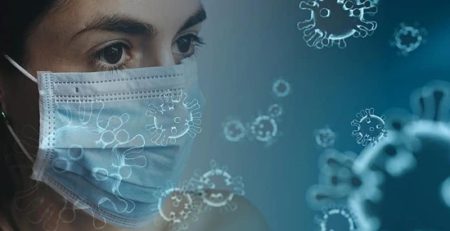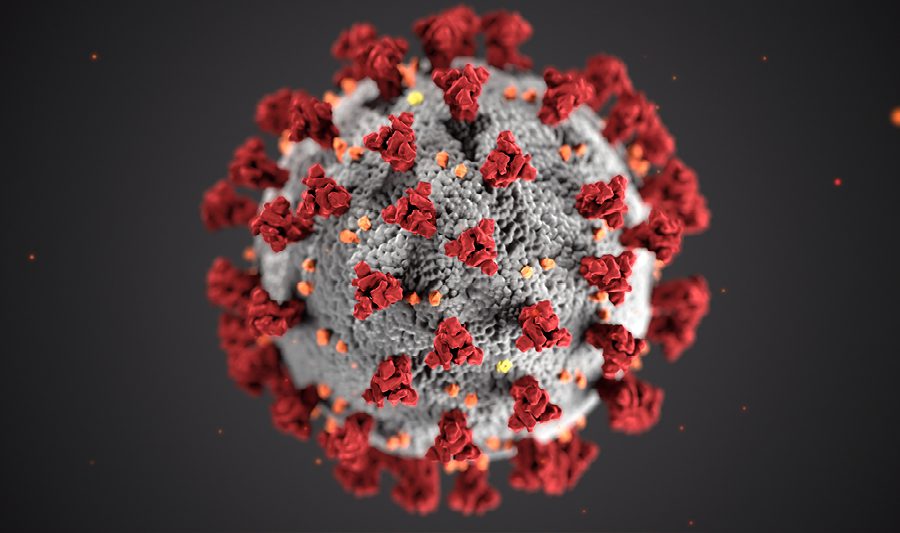“Old Tech” beats the virus in the Covid-Wards
The COVID-19 pandemic has overwhelmed the respiratory isolation capacity in hospitals; many conventional wards lack the necessary high-frequency air changes/adequate ventilation systems for spaces that have been repurposed and dedicated to managing patients infected with SARS-CoV-2. As a result, hospital-acquired infections from COVID-19 and other airborne respiratory pathogens are a recognised problem amongst both patients and staff.
Last week a study titled, ‘The removal of airborne SARS-CoV-2 and other microbial bioaerosols by air filtration on COVID-19 surge units’ was published by research and clinical teams from Cambridge1. It gave an enormous boost to the efforts of so many scientists, medics, and engineers worldwide who had been pushing policymakers about how Germicidal Ultraviolet (GUV) and HEPA Filter devices are highly effective at quashing Covid infection but also those other airborne pathogenic risks.
This Cambridge study examined the effect of air filtration and germicidal ultra-violet (GUV) light sterilisation on detectable airborne SARS-CoV-2 and other microbial bioaerosols. It was conducted with portable air filtration and sterilisation devices in one of the repurposed ‘surge’ COVID wards and ‘surge’ Intensive Care Unit (ICU). The National Institute for Occupational Safety and Health (NIOSH) cyclonic aerosol samplers and PCR assays were used to detect the presence of airborne SARS-CoV-2 and other microbial bioaerosol with and without air/UV filtration.
Results
Airborne SARS-CoV-2 was detected in the Covid-ward on ALL five days before activation of air/UV filtration, but on NONE of the five days when the air/UV filter was operational; SARS-CoV-2 was again detected on four out of five days when the filter was off.
The air purification significantly reduced the burden of other microbial bioaerosols in both the ward (48 pathogens detected before filtration, two after, p=0.05) and the ICU (45 pathogens detected before filtration, five after p=0.05).
These results concur with the thousands of other studies undertaken over the decades on the significant impact of air purification utilising medical-grade HEPA Filters and germicidal UV devices against airborne pathogens, not least the Covid virus2 during the past two years. (There are several other beneficial reference papers also listed below this news article).
Conclusion
These latest results from within “live” Covid environments underline the importance of adequate ventilation to control infection risk and the greater impact in high-risk environments of local intervention with in-room technology to control or eliminate risk when ventilation is considered inadequate for the occupational risks presented.
This Cambridge case study is reminiscent of the solutions adopted in Hong Kong and Singapore hospitals in 2003 during the first Coronavirus pandemic – improving ventilation for the total building as best one could achieve and then supplementing that with infection source control.
Interestingly, the GUV devices that PP-L Biosafety supply today are the same as those used back then in the first Coronavirus pandemic of 2003 in those same Singapore and Hong Kong Hospitals and one of the test devices successfully deployed in this current Cambridge study.
The use of “old-tech” that are GUV based devices within Ventilation systems and for local room risk intervention have been decades-proven to control and prevent infection from the entire range of common pathogens and recently, Covid-19, irrespective of variant.
PP-L Biosafety’s Professional Engineering, Scientific and Medical expertise can support organisations to apply similar proven infection suppression strategies, transferred from successfully treating “Covid-wards” into conventional environments, such as schools, offices, banks, shops, supermarkets, hospitality and so on. With our support, private and public sector managers have the ability to quash infection risk to beat Covid and Flu this winter and also exceed compliance to create a safer, new normal, whilst creating pandemic resilience for the future.
References
Ref 1
The removal of airborne SARS-CoV-2 and other microbial bioaerosols by air filtration on COVID-19 surge units
Andrew Conway-Morris PhD± 1,2, Katherine Sharrocks DPhil± 3, Rachel Bousfield BMBS ± 3,4, Leanne Kermack MSc± 5, Mailis Maes MPhil 5 , Ellen Higginson PhD 5 , Sally Forrest BSc 5 , Joana PereiraDias MSc 5 , Claire Cormie5 , Tim Old MA3 , Sophie Brooks MSc3 , Islam Hamed FRCA1 , Alicia Koenig MBChB 1 , Andrew Turner6 , Paul White PhD6,7, R. Andres Floto FRCP8,9, Gordon Dougan D.Sc5 , Effrossyni Gkrania-Klotsas PhD ¥ 3, Theodore Gouliouris PhD¥ 3,4, Stephen Baker PhD5 , and Vilas Navapurkar FFICM1 *
https://www.medrxiv.org/content/10.1101/2021.09.16.21263684v1
Ref2
Removal of SARS-CoV-2 Bioaerosols using Ultraviolet Air Filtration
Roy E. Barnewall, DVM PhD1 , Werner E. Bischoff, MD PhD
https://pubmed.ncbi.nlm.nih.gov/33706834/
Other useful links:
Wladyslaw Kowalski, UVGI for Hospital Applications – https://www.medicalmate.gr/wp-content/uploads/2020/05/100404Kowalski_Article.pdf
Jong-Il Bang, 2018, Evaluation of UR-UVGI System for Sterilization Effect on Microorganism Contamination in Negative Pressure Isolation Ward
Daniel Jones ,2020, Germicidal Technologies Can Reduce Hospital Airborne Pathogens
Kevin P Fennelly, 2020, particle sizes of infectious aerosols: Implications for infection Control
WHO, 2009, Natural Ventilation for Infection Control in Health-Care Settings
Yu, 2016,Ventilation of general hospital wards for mitigating infection risks of three kinds of viruses including Middle East respiratory syndrome coronavirus
Wladyslaw Kowalski, 2007, UVGI for Hospital Applications
Michael Leung, 2006, Control and management of hospital indoor air quality






Leave a Reply